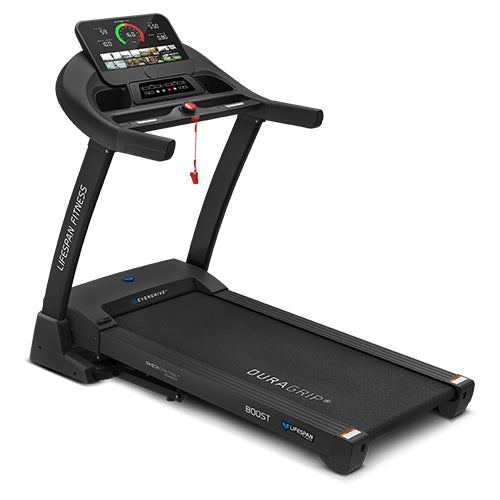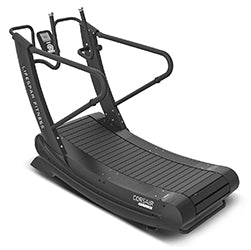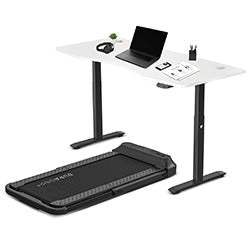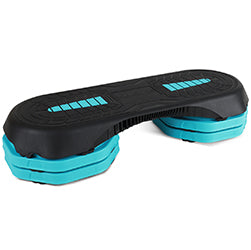

By now, we’re all aware of the importance of proper recovery after exercise. It’s a crucial stage for maintaining muscle health and preventing injuries, as well as making sure that all your hard work is going to pay off. Effective recovery can help you regain strength, prevent soreness and avoid long-term damage.
The questions we’re here to answer is: what kind of things can influence your recovery time? By focusing on post-workout recovery methods, we can ensure better performance in future sessions and help avoid burnout.
Read on to discover the essential steps to improve recovery after exercise.
Heal & Strengthen Your Muscles

During exercise, muscle fibres break down, which is a natural part of building strength and endurance. However, muscles need time to heal and repair.
Incorporating proper recovery techniques allows your muscles to rebuild stronger than before, improving overall performance. Stretching, hydration and post-workout nutrition all contribute to speeding up muscle recovery. This recovery phase also reduces inflammation, minimising soreness and stiffness. Giving your muscles time to heal is crucial for avoiding overuse injuries and achieving long-term fitness goals.
Avoid Injuries
Without sufficient recovery, muscles and joints experience continuous strain, which can result in conditions such as tendinitis, stress fractures or muscle strains. Overtraining can also weaken your immune system, leaving you more susceptible to illness.
Taking time to recover between intense workouts helps prevent chronic fatigue and long-term damage to your muscles and joints. Rest days and recovery routines are essential to prevent injuries, ensuring that you can continue to train safely and effectively.
Post Workout Strategy
Passive Recovery
Passive recovery involves taking a full break from exercise, allowing your body to rest without additional physical activity. This type of recovery is beneficial after particularly strenuous workouts or periods of intense training, as it gives your muscles the opportunity to fully recover and heal.
Passive recovery might include activities such as relaxation, stretching or using recovery tools like massage chairs or compression boots.
Taking time for passive recovery can prevent burnout and help rejuvenate your body, ensuring you're ready for your next workout.
Active Recovery

Active recovery workouts, such as light walking, swimming or yoga, involve low-intensity movements that keep the blood flowing to aid muscle recovery. These exercises help flush out lactic acid and improve circulation, speeding up the recovery process without adding additional strain.
Active recovery helps reduce muscle stiffness and soreness while keeping you moving. Incorporating light activity between high-intensity workouts is an effective way to support faster recovery while still staying active. Stretching is also a key part of active recovery, keeping muscles flexible and healthy
Cross Training
By incorporating different types of exercises, such as cycling or swimming, you can engage different muscle groups and reduce the risk of overuse injuries. Cross-training builds strength, balance and endurance without putting excessive stress on the muscles you've recently worked. It's a great way to stay active while ensuring you’re not overtraining specific areas. Adding variety to your routine can improve muscle recovery while enhancing your overall fitness.
Soft Tissue Therapy
Soft tissue therapy, like foam rolling or massage, can greatly aid muscle recovery after workouts. These techniques help release muscle tension and increase blood flow to the muscles. Regularly practicing soft tissue therapy can prevent the buildup of tightness that often leads to injury or pain. Soft tissue therapy helps the body recover faster by encouraging proper muscle alignment and reducing inflammation.
Nutritional Recovery
Consuming a combination of proteins and carbohydrates within 30 minutes of finishing your exercise helps replenish glycogen stores and repair muscle fibres. Proper hydration is also essential to maintain muscle function and reduce cramps or fatigue.
Including anti-inflammatory foods, such as leafy greens, berries, and omega-3-rich foods like salmon, can further support your body’s recovery process. Ensuring you eat a balanced, nutrient-rich meal post-workout speeds up recovery and prepares your body for your next session.
Sleep
Sleep is one of the most important yet often overlooked aspects of recovery after a workout. During deep sleep, the body produces growth hormones that repair muscle tissues and support overall recovery. Lack of quality sleep can slow down recovery time and impact performance in future workouts.
Aim for 7-9 hours of sleep each night to ensure optimal recovery. Establishing a consistent sleep schedule and creating a relaxing bedtime routine can enhance your sleep quality and speed up muscle recovery.
Tools to Aid with Recovery
Compression Boots (100 words)

Compression boots use air pressure to massage your legs, enhancing lymphatic drainage and reducing inflammation after a workout. Athletes often use compression boots after intense training sessions or competitions to help flush out lactic acid and minimise swelling. By speeding up recovery time, compression boots allow you to train harder and more frequently without overstraining your muscles.
Saunas

Saunas promote muscle recovery by improving circulation and encouraging relaxation. The heat from a sauna helps loosen tight muscles and joints, reducing stiffness after exercise. Spending time in a sauna post-exercise can enhance overall recovery, helping your body unwind while promoting quicker muscle healing. Using a sauna regularly as part of your recovery routine can improve your flexibility and reduce soreness.
Massage Chairs

By mimicking the techniques of a professional massage, massage chairs help relieve muscle tension and reduce stiffness. Regular use of a massage chair after workouts can prevent muscle tightness from becoming chronic, improving long-term flexibility and recovery. Many massage chairs offer different programs to target specific muscle groups, allowing you to personalise your recovery experience.
Conclusion
Whether through passive or active recovery, cross-training or using tools like compression boots and massage chairs, taking the time to recover helps ensure that you can continue pushing your limits.
Pairing recovery workouts with good nutrition and quality sleep will further support your body’s healing process.
By prioritising recovery, you set yourself up for long-term success in your fitness journey.
If you have any questions about our range of recovery products, don’t hesitate to reach out to our team of experts, and we’ll be happy to help you out.
















































